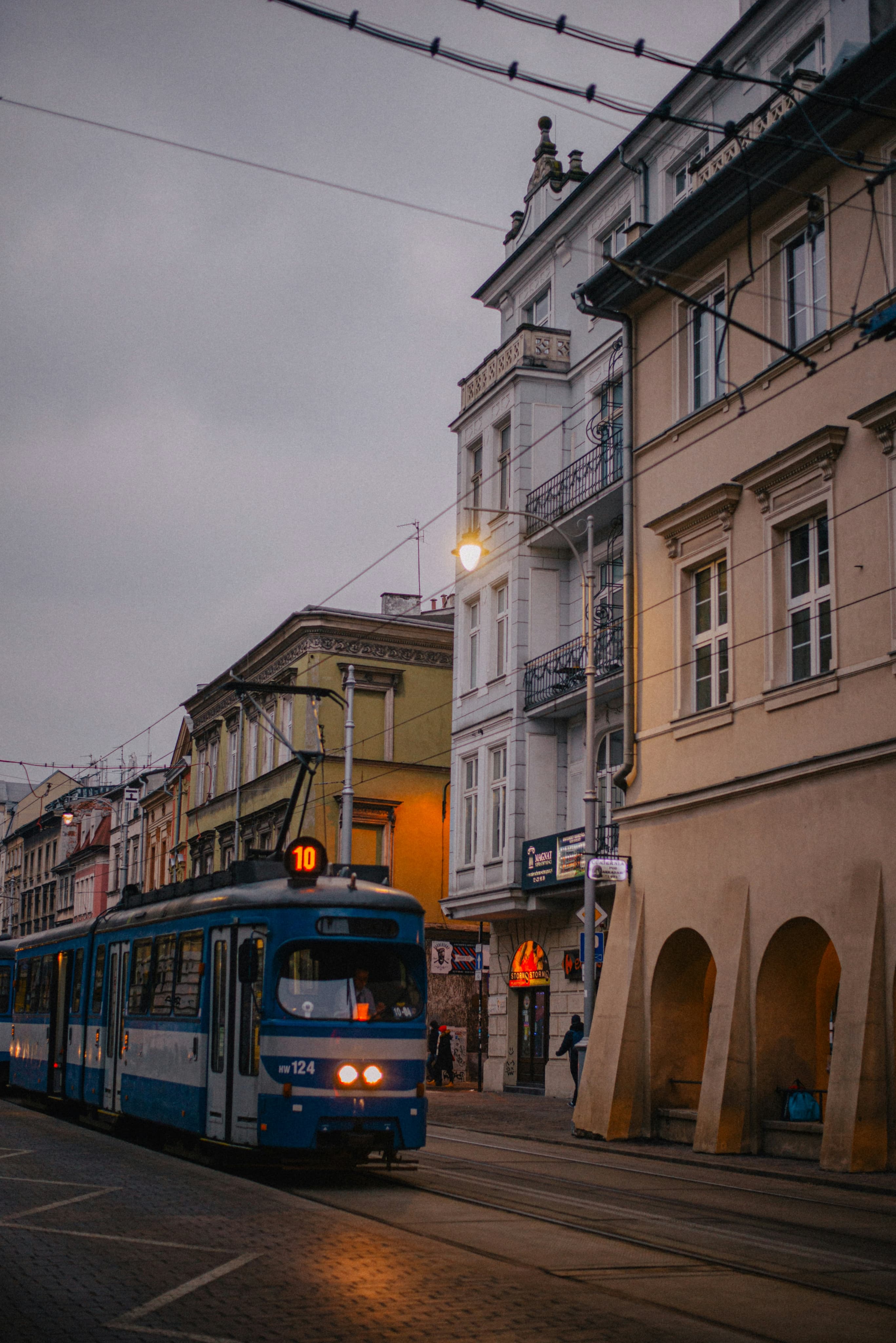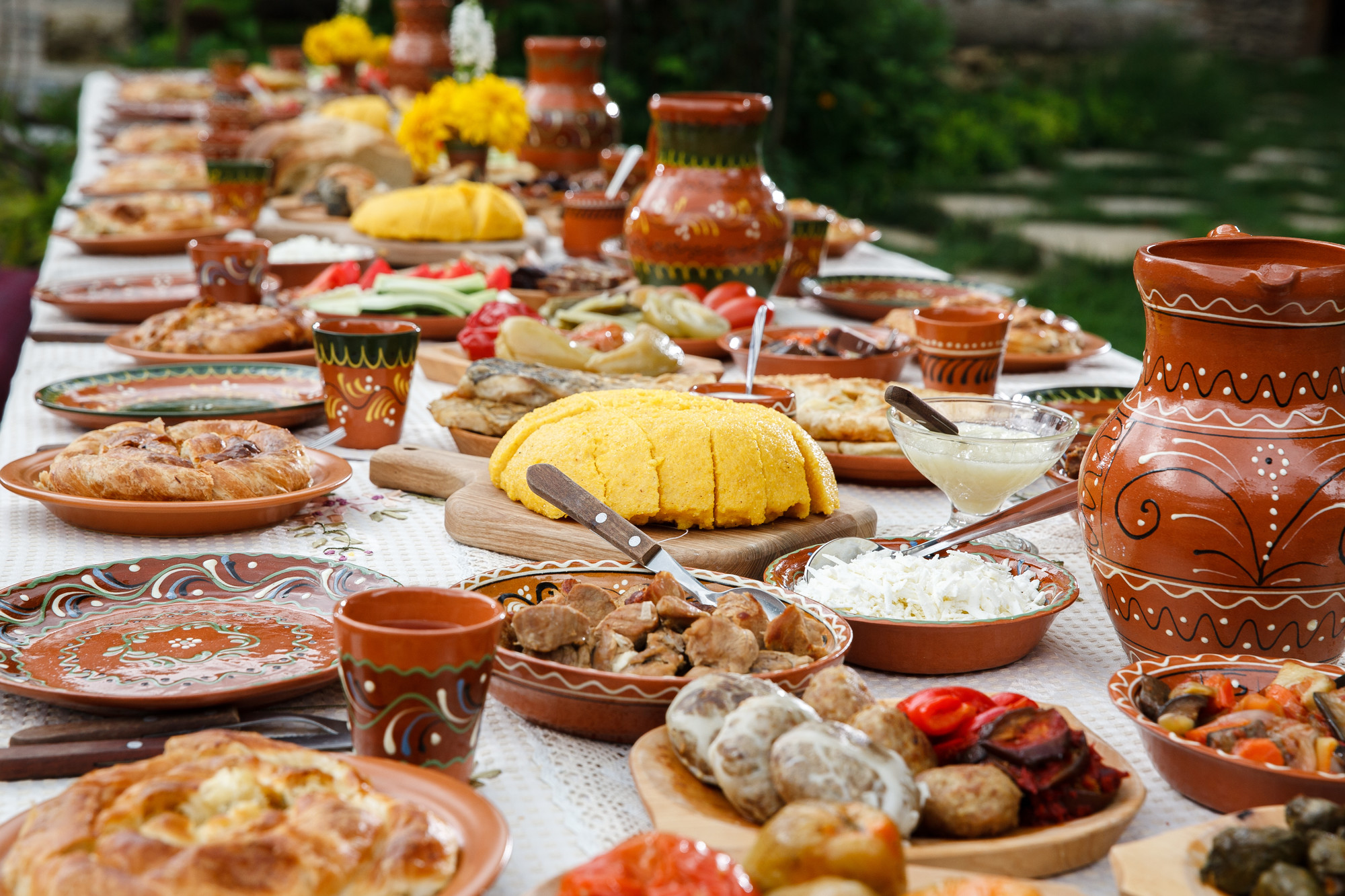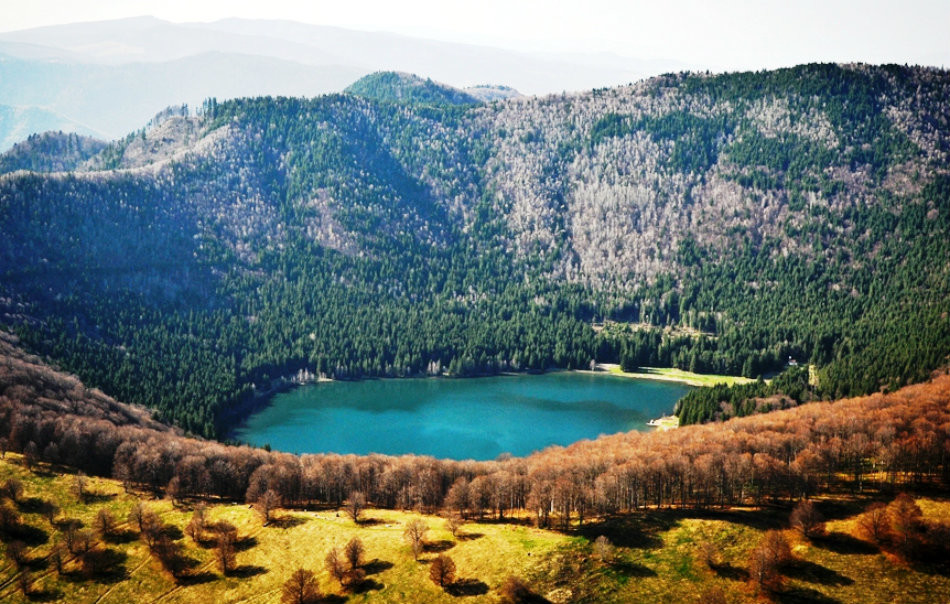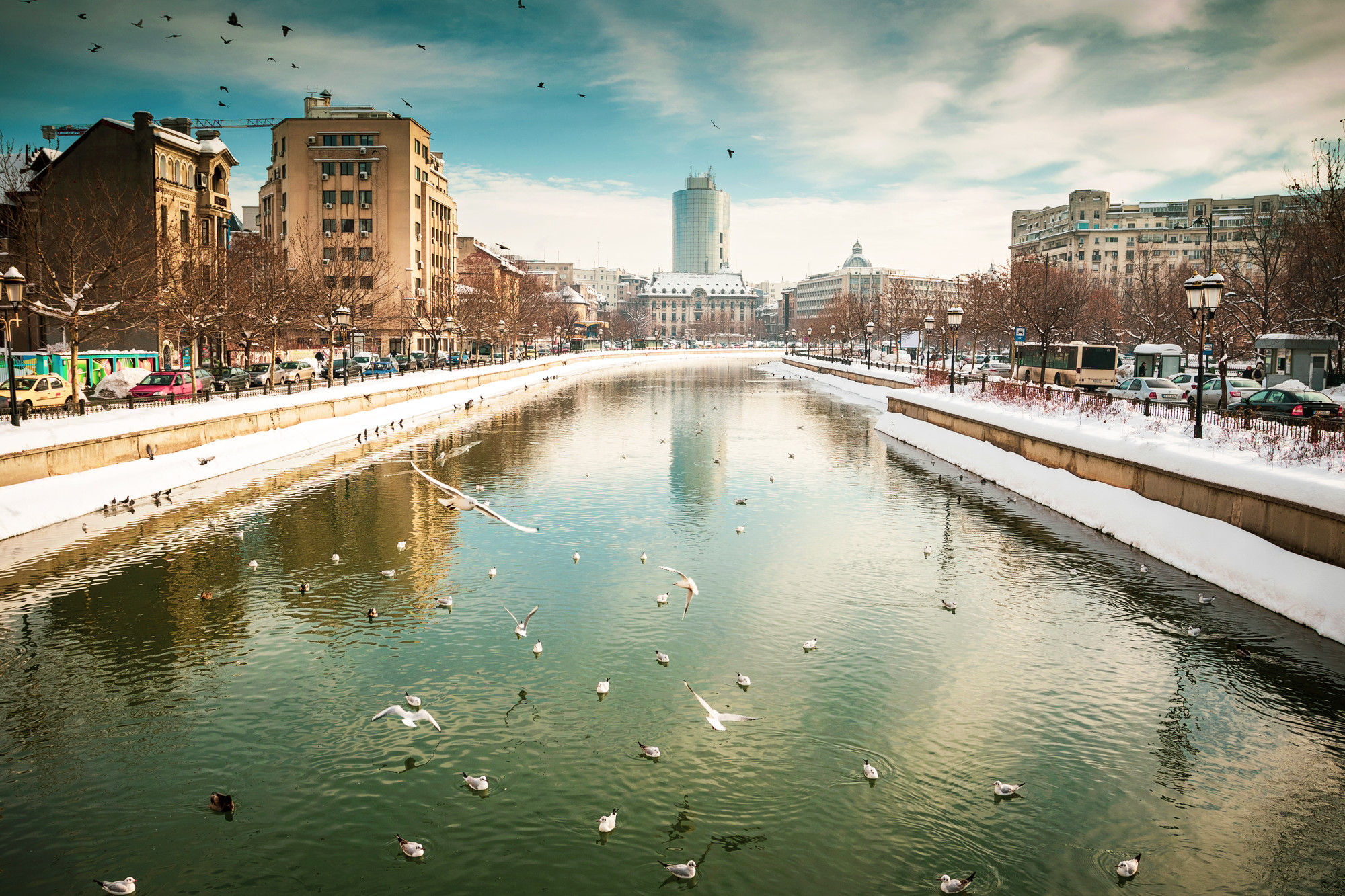A legal, officially licensed Romanian version of the game has been around since 1999, although at first it was produced in limited numbers and finding a copy could often be a real pain in the community chest: finding the US version was often much easier. These days, however, the Romanian version is ubiquitous, and can be picked up for around 120.00 lei in Auchan, Carrefour, Cora and Diverta Music & Film, amongst other places.
We have no idea who devised the Romanian board, though aficionados of the game will be delighted to learn that all of the quirks of the original remain: the choice of streets and stations is a little arbitrary; some streets are not, in fact, streets; prices are laughably low; the rules are incomprehensible and you can still win money by coming second in a beauty contest. We have long said that the local version of the game makes the perfect souvenir of your visit to the Romanian capital.
A Trip Around the Bucharest Board
Rahova is a colourful working class district of Bucharest. The highlight of the area is unquestionably the amazing, huge flower market (Piata de Flori) at the eastern end of Calea Rahovei behind Piata George Cosbuc (and just a short ride on the No. 32 tram from Piata Unirii). The flower market takes place daily (in fact, it never really closes) in the shadow of Bere Rahova, an old beer factory, some of whose marvellous red-brick buildings have recently been renovated. While the rest of Calea Rahovei is of little interest to the visitor, it is worth noting that the blocks which line the street were the first in Bucharest to be colourfully painted, some ten years or so ago now. The trend for bringing life to grey, socialist-era blocks with brightly coloured paint is now visible all over the city.Some distance from Rahova is the other brown property, Calea Giulesti. It is best known as the site of Stadion Giulesti, home to Rapid Bucharest, the ugly sister of Bucharest football (Steaua and Dinamo remain the capital’s best supported sides). Founded by railway workers (the main line into Gara de Nord passes within a few metres of the stadium) the team has won the Romanian championship just three times, in 1967, 1999 and in 2003. Fans of bizarre buildings might like to know that the prototype-looking skyscraper with few – if any – windows next to the stadium (and visible from every train coming and going from the station) is in fact a now derelict elevator test-shaft. It was built in the 1970s by Ascensor SA, the national lift company, which hoped to corner the European market in high-speed lifts for tall buildings. It didn’t.
The first train station on the Bucharest board is Gara Progresu, a bleak outpost of the Romanian railways which these days sees little, if any, traffic. Indeed, the Romanian train timetable (online at cfr.ro/mersultrenurilor) in fact lists no regular passenger trains as being scheduled to stop here for the foreseeable future.
Balta Alba translates as White Pond, and is named for the lake in the middle of Titan/IOR park, one of the largest and best in the city. It has been completely renovated and re-landscaped at great cost over the past few years and is a wonderful place to spend time.
Unfairly regarded as the Bucharest hood, B-dul Pantelimon is a working class area named for the Orthodox St. Pantelimon the Healer, and is the gateway to the less-visited sights east of the city, including Cernica, a 19th-century monastery nine kilometres from the capital. Its church features frescoes painted by the little-known maestro George Frujinescu.
Berceni is a less than salubrious district of the capital, which we would suggest is not really worthy of its light blue status on the Bucharest Monopoly board. It is home to the capital’s most chaotic department store, BIG, now joined opposite by the rather more swish Sun Plaza mall. You’ll find it behind Piata Sudului.
The district of Titan was the largest housing project in the country when it was completed in the early 1970s. It is home to more than a tenth of the city’s population, and is today seeing something of a revival, with hundreds of new apartments being built in shiny new blocks. The redevelopment of the big Titan/IOR park has helped the area. It is well worth taking the metro to Titan both to explore the lovely park (which features a full-scale replica of a wooden Maramures church) as well as have a peek at Titan metro station itself: the biggest and most grandiose on the entire Bucharest system.
Colentina is an area of high-rise blocks and shabby houses often built haphazardly along streets some of which remain unpaved even today. It is of absolutely no interest to visitors.
Neighbouring Tei was probably a lovely area once, the lake of the same name providing a fair retreat for citizens of pre-communist era Bucharest. Now, alas, it is another shabby area of blocks. B-dul Lacul Tei is however home to Bucharest’s Circus.
Gara de Est (or, more commonly, Gara Obor) is another of Bucharest’s stations that sees almost no traffic. Just six trains a day leave from here, all of which are painfully slow Regio trains serving Fetesti and Constanta. The station building itself however - constructed in 1932 - is a gem.
B-dul Timişoara heads west towards little in particular from Piata Danny Huwe, a square named for a young Belgian journalist killed in Bucharest during the 1989 revolution. B-dul Timisoara is home, however, to one of Bucharest’s best shopping centres, the AFI Palace.
The district of Drumul Taberei was something of a socialist showpiece when first constructed in the 1960s, a planned suburb of wide avenues, parks, hospitals, clinics and shopping centres. It remains one of the best-kept areas in the city, though poor public transport connections and its distance from the city centre keeps real estate prices here down, whether they be on the Monopoly board or off. It was in this neighbourhood (then a field) that Tudor Vladimirescu camped with his forces during the failed peasants’ rebellion of 1821.
The first of the red set is B-dul Carol I. The Secession houses, hotels and public buildings that line it could make it one of the finest streets in Europe. Alas many of the buildings are in poor repair, and some are considered major earthquake risks. Named B-dul Republicii during the communist period, Marxists would be horrified to discover that the Bucharest Stock Exchange (Bursa de Valori Bucuresti, BVB) once operated in the skyscraper at Nos. 34-36. Opposite, on the corner of Str. Armeneasca, is the newly renovated Biserica Armeneasca, centre of the Armenian faith in Romania.
B-dul Mihai Kogalniceanu is another of Bucharest’s many streets that carried a different name before 1989, in this case B-dul Gheorghe Gheorghiu-Dej. Lined with smart 1920s apartment blocks (and the Romanian National Opera House at its western end) look out for the large statue of Mihai Kogalniceanu himself in the small square that splits the road in two. Kogalniceanu was prime minister of Romania in the 1860s.
B-dul Eroilor is home to the enormous Academia Militara (Military Academy), designed by Duiliu Marcu (also responsible for the Palatul Victoriei) and completed in 1939. The Academy was one of the few places in Bucharest that saw live action during the relatively peaceful handover of power from Marshall Antonescu to King Mihai in August 1944. A small plaque in the courtyard commemorates the soldiers killed while successfully attacking the building, which played host to German military ‘advisors’ throughout World War II, and which served as a last bastion of Nazism in Romania
Now almost completely swallowed by its big brother Gara de Nord, Gara Basarab is the third station on the Bucharest Monopoly board. It is a grim place which serves a couple of Regio trains that run to and from the villages which dot the countryside around the capital.
B-dul Nicolae Titulescu which runs from Piata Victoriei to Gara de Nord, is home to almost nothing of note. Lined by tower blocks its main point of interest for visitors is the legendary Dubliner, the first Irish pub to open in Romania, back in 1995. The large Italianate building at the corner with Str. Banu Manta is the city hall of Bucharest’s Sector 1, built from 1927-36.
B-dul 1 Mai is one of those streets that just can’t make its mind up. Marked on some maps (including the one in Bucharest In Your Pocket) as B-dul Ion Mihalache, most locals continue to use the communist-era name, B-dul 1 Mai. One of the oldest arteries in the city it leads to the the suburb of Bucurestii Noi (New Bucharest), a district worthy of a footnote: constructed from 1953-7, it was a showpiece development of Neo-Classical-style buildings (including apartments and a theatre - pictured above) common in Poland and the USSR and was the first major housing project to be built in Bucharest after the communist takeover. There are similar blocks on B-dul Basarabia, opposite the Arena Nationala.
The fact that Calea Dorobanti follows B-dul 1 Mai is one of the vagaries of the Monopoly board that makes the game such fun. Regarded by many as the best address in the capital (and more deserving of a place up in the dark blues than B-dul Magheru), Dorobanti was originally known as Ulita Fierastraului, and was the private domain of 18th-century humanist Alexandru Ipsilanti, who had his summer house at the northern end of the street. It was renamed Calea Dorobantilor in 1878, in honour of the Dorobanti (foot soldiers) who died in Romania’s wars of independence. Home to embassies and large villas of the super-wealthy, its most famous landmark is the headquarters of Romanian Television (Televiziunea Romana) at No. 191. Built in 1968 in a strange, modernist style it was the scene of heavy fighting during the 1989 revolution.
Avoiding the Go to Jail square (which in Bucharest means Rahova, south of the city), we arrive at Piata Unirii, the centre of Nicolae Ceausescu’s Civic Centre (Centru Civic). Piata Unirii has in fact been around for as long as Bucharest has existed: there was a market here as early as the 16th century. Today’s square is unrecognisable from that which stood here before 1980. Back then it was surrounded by low-rise houses, shops, and the early-19th century Hanul lui Manuc. The Hanul is now all that remains: two sides of the square are faced by apartment blocks, while on the eastern side is Unirea: the country’s first modern department store when opened in 1977, and today a shopping centre. The once lively daily market that operated in the centre of the square, and which was for more than a century the heart and soul of the city, has long gone.
Cotroceni is a leafy, wealthy and sought-after district of Bucharest home to Cotroceni Palace: the official residence of Romania’s president. Other residents include the Arenele BNR: home of the Romanian Open tennis tournament that takes place every September.
Of all the city’s streets, none is more historic than Calea Victoriei. Dating back to 1692, it was created by Constantin Brancoveanu to link the old city center around Piata Unirii with his residence at Mogosoaia. Originally built with logs, it was paved with stone in 1825, when it became a fashionable place for the wealthy to build residences. Many of the best houses remain to this day, including the Casa Vernescu at No. 133 (today home to a couple of excellent restaurants) and the Casa Romanit at No. 111 (today the Art Collection Museum). It is also home to numerous churches, museums, five-star hotels (including the Radisson Blu and the Athenee Palace Hilton), the former royal palace (now the National Art Museum) and the extraordinary CEC building at No. 13.
Gara de Nord is Bucharest’s only railway station of any importance. All trains in and out of the capital stop here. It was opened in 1872, at once with the completion of Romania’s second railway line, from Bucharest to Ploiesti. (Bucharest’s first station was the Gara Filaret, now a bus station). While much of the Gara de Nord building dates from the original period, it was extensively rebuilt in the 1930s, when the façade took on its present, rather minimalist linearity, inspired by the many Italian railway stations being built at the time.
B-dul Magheru is a noisy, dusty and busy street that barely warrants its place amongst the dark blues at the sexy end of the Monopoly board. It is named for Gheorghe Magheru (1802-80), an outlaw turned Wallachian general who took part in the peasant uprising of June 1848. Magheru was exiled after the uprising was put down by Turkish forces in the Autumn of 1848, and returned only after the unification of Wallachia and Moldavia in 1859.
The last and most expensive property on the Bucharest Monopoly board is B-dul Primaverii a leafy residential street in the north of the city and very much the Romanian capital’s millionaires’ row. Lined with large villas and classy apartment blocks it is home to some of the richest and most powerful people in the country. Apartments here cost small fortunes. During the 1980s the well-guarded building (it remains state property) on the corner with B-dul Mircea Eliade (in those days B-dul Kalinin) was the official residence of Nicolae and Elena Ceausescu.





